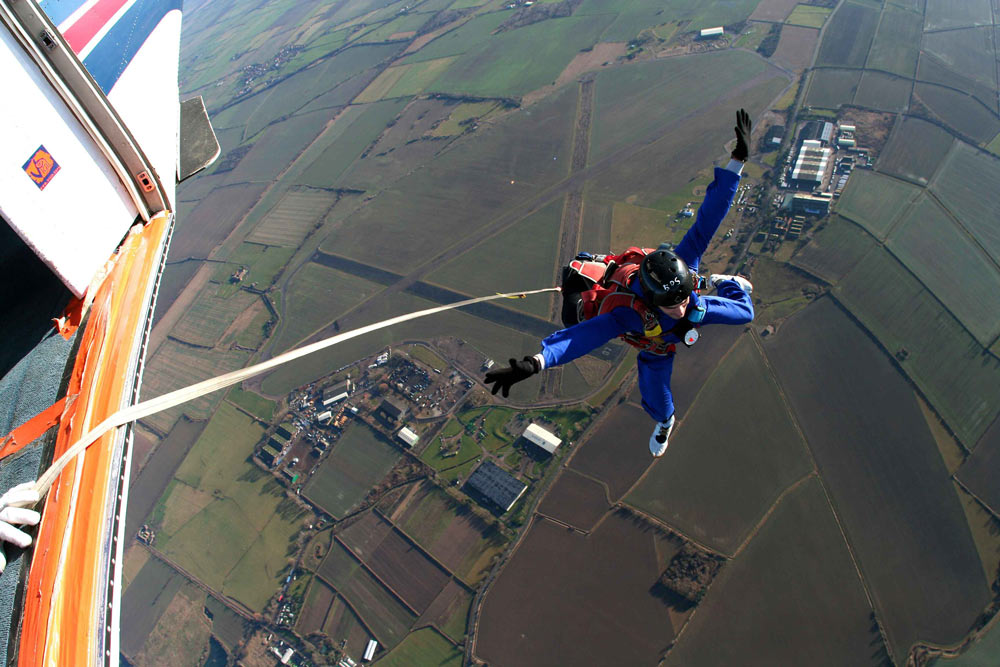One of the most common misconceptions about skydiving is that you HAVE to start with someone on your back.
That’s absolutely not true!
You can skydive by yourself from your very first jump. You don’t need to do tandem jumps before you can skydive solo. However, while you start solo, it does take a while before you truly ‘skydive’ by yourself.
Personally, I’ve never had a skydiving instructor attached or holding onto me, but it was my 7th solo jump that I truly consider my first skydive.
Let me explain.
The 2 Ways of Learning to Skydive Solo
No matter where you go in the world, solo skydiving is taught in one of either two courses:
I’ve got a detailed comparison between these two here.
The type of course you decide to do will hold different experiences for you. In my opinion, ‘solo skydiving’ isn’t just leaving the plane on your own.
I would define a solo skydive as when you:
- Jump out the plane yourself
- Don’t have anyone holding on to you
- Freefall up to terminal velocity (10 seconds or more)
- Pull your parachute yourself
Let’s look at how far along each training course you need to be before you truly skydive solo.
Accelerated Free Fall: Jumps Until Solo Skydive
In AFF, you start right at the highest altitude. The idea is that your first jumps are done with your instructors jumping with you and holding on to you on either side (NOT fully attached like in a tandem jump).
The first few jumps go like this:
- AFF Jump 1: First Skydive. This is pretty much for the experience! You have an instructor on either side of you as you freefall from 10,000ft. They even pull the parachute cord for you – the skydiving equivalent of a butler.
- AFF Jump 2: Focus on Position. As above, but you start to practice your arch position with instructor supervision.
- AFF Jump 3: Released By Instructors. Just like #2, except once you’re in a stable position the instructors will release their hold of you. You’ll be on your own, but not for the whole jump.#
- AFF Jump 4: Solo Skydive. Finally, jump 4 is when your entirely skydiving solo! While you’re still under instructor supervision, they’re only there as a backup. You freefall and pull your chute totally by yourself.
4 jumps until getting your first solo skydive isn’t bad at all! From there, AFF quickly progresses into maneuvers and building up more jump confidence.
Now let’s take a look at the more old-school option.
Static Line: Jumps Until Solo Skydive
This method takes a very different approach – you jump entirely alone from the start, but with your parachute cord attached to the plane. This opens your parachute immediately, but removes any chance of freefall.

The first few jumps go like this:
- Static Line Jumps 1 & 2: First Skydives. These are simply to let you enjoy the ride, and get experience flying the canopy yourself.
- Static Line Jumps 3 – 5: Dummy Pulls. Once you have some confidence, you begin to ‘fake pull’ your parachute cord to get you used to the action of pulling your parachute.
- Static Line Jump 6: First Freefall. The scary one! Instead of being attached to the plane, it’s now up to you to pull the parachute. However, you still pull it almost immediately.
- Static Line Jump 7: 5 Second Delay. As above, but you count to 5 this time. Still not at terminal velocity.
- Static Line Jump 8: 10 Second Delay. This is where you finally hit maximum freefall speed!
If you check back to the ‘requirements’ for a solo skydive above, it takes until the 8th static line jump before I’d consider it a true solo skydive. At least that’s my own experience.
After the 10 second delay comes the 15 second one, and that’s even more intense! Though I’d still consider Jump 8 as ‘ticking the box’ for a solo skydive.
Conclusion
I hope this super-quick article has helped clear up just how many jumps you need before you skydive solo.
This is only my opinion, however! Some would argue that even the very first static line jump counts as a solo skydive, and others say there’s no real difference between a tandem jump and doing it yourself. At the end of the day, you’re still throwing yourself out of a plane!
Whatever the case, I do hope you at least understand how the solo skydiving courses work in terms of getting to that elusive solo jumping level.
If you’re preparing for or thinking about undertaking a course, make sure to check out the related articles below! I’m doing my best to build into a friendly resource for skydiving newbies.
Blue skies,
Craig
